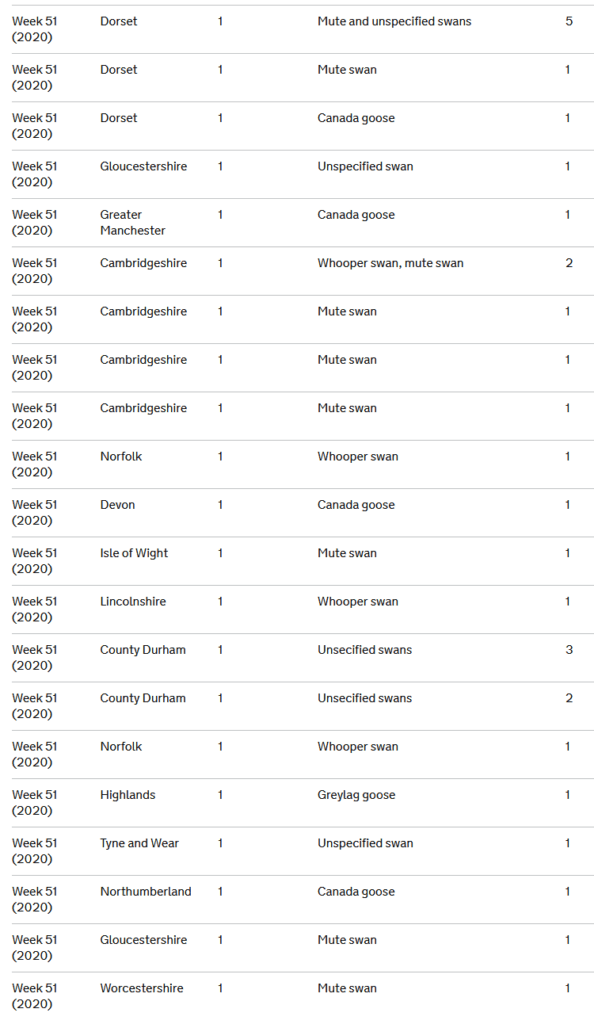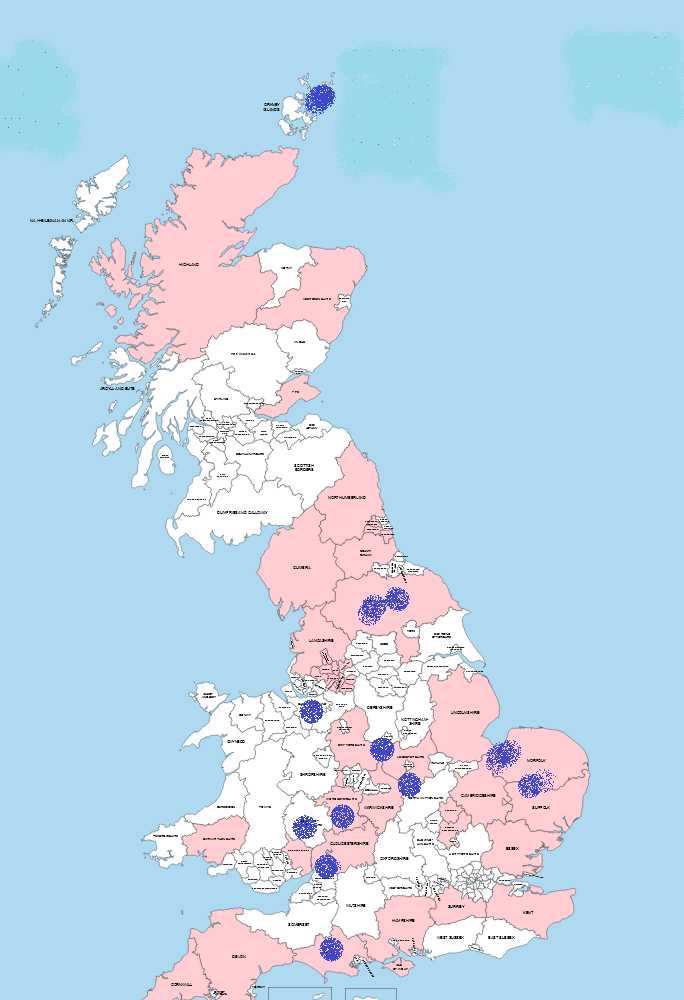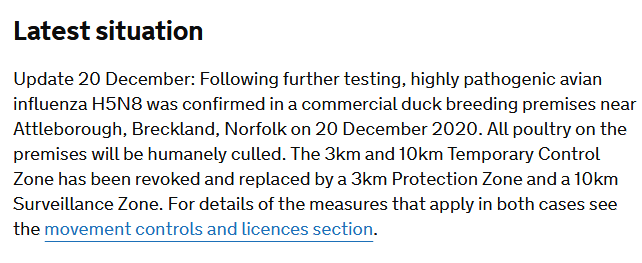Records of avian/poultry flu in new counties: Bedfordshire, Tyne and Wear, Highland, Greater Manchester and County Durham. All of the cases are in waterfowl, and in fact in swans (Mute, Whooper, unspecified and unsecified) and Canada and Greylag Geese. This must indicate the ease with which dead swans and geeese can be noticed rather than the extreme specificity of the virus to these few species. It might well be if all dead Mute Swans were tested then the map would be completely pink, but that if, perhaps, all dead Lapwing were tested it would show the same thing. And what about all dead Blackbirds? And how about some live birds? We don’t seem to understand much about the bird species involved. That must have implications for understanding the way that the disease gets into poultry farms where the birds are extremely vulnerable to the impacts of the virus.
There are relatively few cases in poultry farms.



“If you find dead wild waterfowl (swans, geese or ducks) or other dead wild birds, such as gulls or birds of prey, you should report them to the Defra helpline”
This DEFRA request may account for why there are no reports of other species. There was a Peregrine and a Kestral, maybe they do not turn out for other species.
Does the BTO garden birdwatch get any (more than unusual) reports of sick birds (without identifying symptoms such as growths or coughing) during the outbreak.